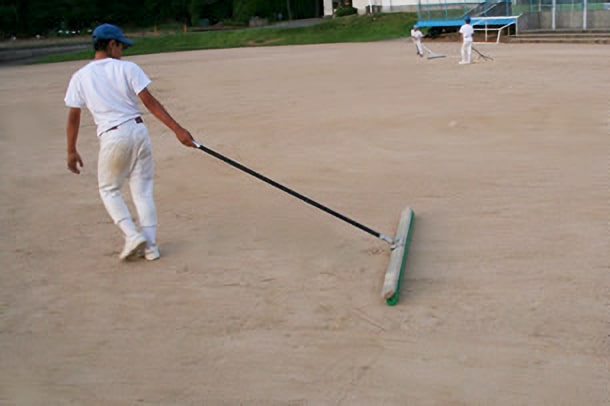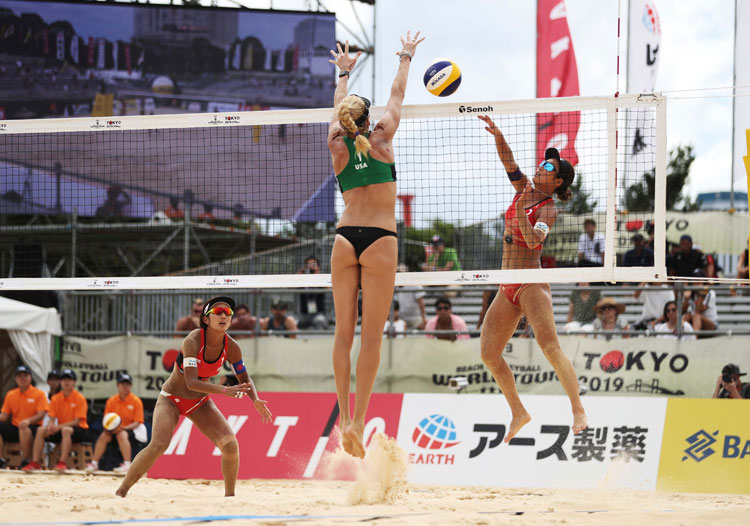
Kendo is a traditional Japanese martial art that pursues both technical mastery and spiritual growth.
However, feeling pain in the wrist during Kendo practice is a common problem for many Kendo practitioners.
This article provides the causes of wrist pain in Kendo and practical advice on how to prevent and treat it.
We aim to help you enjoy Kendo safely by acquiring the appropriate knowledge and countermeasures.
By understanding pain and managing it appropriately, you can continue to walk the path of Kendo in a healthy manner.
目次
Introduction: Main reasons why wrists hurt in Kendo
Wrist pain in Kendo is a common phenomenon, especially among beginners and Kendo practitioners who have increased the intensity of their practice.
This pain is often caused by movements and equipment specific to kendo, so it is important to understand the correct knowledge and preventive measures.
Main factors that increase stress on the wrist
- Inaccuracy in technique : In the process of learning how to hit and handle the ball correctly, undue force is often applied to the wrist when the technique is still immature. In particular, if the grip is too stiff when swinging the Shinai, it will cause excessive stress on the wrist.
- Repetitive stress : Kendo training involves repeating the same movements over and over again, which puts repetitive stress on your wrists. This repetitive motion can cause inflammation of the wrist muscles and tendons.
- Effects of equipment : If your protective gear, especially kote (protective gear that protects your hands), does not fit properly around your wrists, it can cause unnecessary friction and pressure on your wrists, causing pain.
Possible symptoms of wrist pain
Wrist pain can be a simple sign of overexertion, but you should also consider that it may be an early symptom of a more serious disorder.
Examples include tendonitis and wrist ligament injuries.
The purpose of this chapter is to help you understand the main reasons why your wrists hurt when practicing Kendo, so that you can take appropriate preventive measures and continue your practice in a healthy manner.
In the next chapter, we will take a closer look at specific measures to avoid these problems.

Kendo movements that cause wrist pain
Certain movements during Kendo practice can cause wrist pain.
Here, we will list some Kendo techniques and movements that put strain on the wrists, and explain why they cause pain.
Main burden-bearing movements
-
Koteuchi :
- Kote-uchi is one of the basic techniques of Kendo, and is a technique that aims at the opponent’s wrist. This technique requires a quick twisting motion of the wrist at the moment of strike. Performing this technique with improper form can cause excessive rotation and pressure on the wrist, causing pain and injury.
-
Consecutive attacks of menuchi :
- Men-uchi is the most common striking technique in Kendo, and involves hitting the opponent’s head with a bamboo sword. Continuous face-hitting attacks require you to swing your arms up at high speeds, which puts repetitive stress on your wrists. In particular, if your grip on the shinai is too tight, it will put unnecessary strain on your wrist.
-
Sword catching and blocking :
- During a match, the action of blocking your opponent’s attacks can also put a lot of stress on your wrists. Strong impacts are transmitted directly to the wrists, increasing the risk of pain and injury, especially if you are not properly protected.
Cause of pain
-
Improper form and technique :
- Wrist pain often results from improper hitting or poor form. It is important to gradually improve your technique with guidance during practice until you have the correct technique.
-
Over practice :
- Prolonged Kendo practice increases repetitive stress on the wrists, which can lead to overexertion injuries. There needs to be a balance between proper rest and practice.
-
Equipment issues :
- A kote or shinai that doesn’t fit properly can put unnatural stress on your wrist. Equipment should always be kept in proper size and condition.
By understanding these movements and their causes, you will be able to prevent wrist pain in Kendo and improve your technique more safely.
The next chapter details specific measures to prevent these problems.

Prevention: Exercises to avoid wrist pain
Preventing wrist pain in Kendo is important for long-term practice and maintaining health.
Here are practice techniques to prevent pain and specific ways to protect your wrists.
Improving practice techniques
-
Learning the correct grip :
- When gripping a shinai, it is important to grip it with just the right amount of force so as not to put too much pressure on your wrist. It is especially recommended that you use your little finger and ring finger to support the shinai, with your other fingers resting lightly on it as a guide.
-
Practice a relaxed hitting style :
- It is important to relax your whole body when striking, and be especially conscious of not putting unnecessary force on your shoulders, arms, and wrists. Swinging the bamboo sword in a natural manner without using too much force will reduce the strain on your wrists.
-
Improved technical accuracy :
- To learn accurate techniques, start with basic movements and gradually move on to more complex techniques to minimize stress on your wrists. Practicing under a teacher is very effective.
Wrist protection and support
-
Use proper armor :
- Kendo armor is very important, especially the kote, which must fit properly to protect the wrists. Make sure the gauntlet fits properly and make any customizations or adjustments as necessary.
-
Consideration of support gear :
- If you experience pain in your wrists, wrist braces or taping can provide additional protection. This increases wrist stability during exercises and reduces the risk of injury.
-
Proper warm-up and cool-down :
- Warming up thoroughly before practice and cooling down after practice will help keep your wrist muscles and tendons flexible and prevent injury. Light stretches and flexibility exercises that involve wrist movements are especially effective.
Practicing these prevention methods will make your Kendo practice safer and more enjoyable, and you can effectively avoid wrist pain.
It is important to always pay attention to your body’s signals and address any discomfort promptly.

Treatment and recovery: approaches to wrist pain
Wrist pain in Kendo is something you want to avoid, but when it occurs, proper treatment and recovery processes are necessary.
Here we provide advice on how to treat pain and an effective recovery process when it occurs.
Initial response: RICE principle
-
Rest :
- If pain occurs, it is important to immediately stop using your wrist and get some rest. To prevent further injury, stop your activities and avoid stressing your wrists.
-
Ice :
- If there is pain or swelling, apply a cold pack or bag of ice wrapped in cloth to your wrist. During the first 48 hours, cooling several times at 15 minute intervals is recommended.
-
Compression :
- Appropriate pressure on the wrist can help reduce swelling. When using compression bandages, care must be taken not to obstruct blood flow.
-
Elevation :
- Keeping your painful wrist elevated above your heart can help reduce swelling. You can use a pillow to support your wrist while relaxing.
medical treatment
-
Doctor’s diagnosis :
- If the pain persists or does not improve, it is necessary to consult a doctor. If necessary, diagnostic tests such as X-rays and MRI may be performed, and a specific treatment plan may be proposed.
-
Physical therapy :
- Wrist exercise therapy and strengthening programs under the guidance of a physical therapist can help restore strength and flexibility to your wrist. Appropriate exercise relieves pain and promotes recovery.
Long-term recovery and relapse prevention
-
Proper practice resume :
- When resuming Kendo practice after recovery, it is important to gradually increase the intensity. Initially, focus on basic technical movements and gradually return to regular practice.
-
Preventive stretching and strengthening :
- Regular stretching and wrist strengthening exercises can help reduce the risk of recurrence. Warming up, especially before practice, can help prevent wrist injuries.
If you experience wrist pain, these steps will help you continue practicing Kendo in a healthy manner.
It is important to always pay attention to your own physical condition and seek professional help if necessary.

Frequently asked questions: Wrist pain in Kendo
Below are frequently asked questions and answers regarding wrist pain that occurs when practicing Kendo.
We hope this information helps answer some common questions about wrist pain.
Q1: Why do my wrists hurt during Kendo?
A1: The main causes of wrist pain in Kendo are incorrect technique, repeated stress, or the use of inappropriate equipment. Especially for beginners, improper handling and striking of the Shinai can place unnecessary stress on the wrist.
Q2: How can I prevent wrist pain?
A2: To prevent wrist pain, it is important to learn correct Kendo techniques and perform proper warm-ups and cool-downs. It’s also a good idea to wear appropriate wrist protection and use support gear if necessary.
Q3: Is it okay to continue practicing when my wrist hurts?
A3: If your wrist hurts, we recommend that you take a break from practicing as the pain may worsen. Take adequate rest and follow your doctor’s diagnosis and instructions until the pain improves.
Q4: Are there any home remedies for wrist pain?
A4: RICE principles such as cooling, compression, and elevation are effective for wrist pain. Using over-the-counter painkillers is also effective as a temporary measure, but if you use them for a long time or your symptoms worsen, it is important to see a doctor.
Q5: What medical professional should I consult if my wrist pain persists?
A5: If your wrist pain persists, we recommend consulting an orthopedic surgeon. It may also be helpful to seek support from a physical therapist or rehabilitation specialist if needed.
These FAQs provide reference information to help you enjoy Kendo safely by answering common questions about wrist pain in Kendo.
If you have any questions, it is best to consult an appropriate professional.

summary
Kendo is a martial art that requires technical precision and mental maturity, but practicing can be stressful on the wrists.
Wrist pain is a common problem for Kendo practitioners, and proper measures and prevention are important.
Below are some key points to minimize wrist pain in Kendo.
-
Improving techniques : It is essential to learn Kendo techniques accurately and avoid improper form and excessive force. It is important to always practice under high-quality instruction.
-
Proper equipment : To properly protect your wrists, choose armor that fits properly and utilizes additional support as needed. Please check the condition of the kote regularly and make any necessary adjustments.
-
Take precautions : Reduce your risk of injury by warming up and cooling down properly and incorporating exercises that strengthen your wrist muscles and tendons.
-
Proper rest : If you feel pain, it is important to take proper rest without overdoing it. If the pain persists, it is important to consult a specialist and receive appropriate treatment.
-
Ongoing physical care : Pay attention to the condition of your wrist and try to avoid putting too much strain on it in your daily life. Keep your wrist healthy with regular check-ups.
Wrist pain in Kendo can be significantly reduced with proper treatment and preventive measures.
By not ignoring the pain and taking early measures, you can lead a long and healthy Kendo life.





